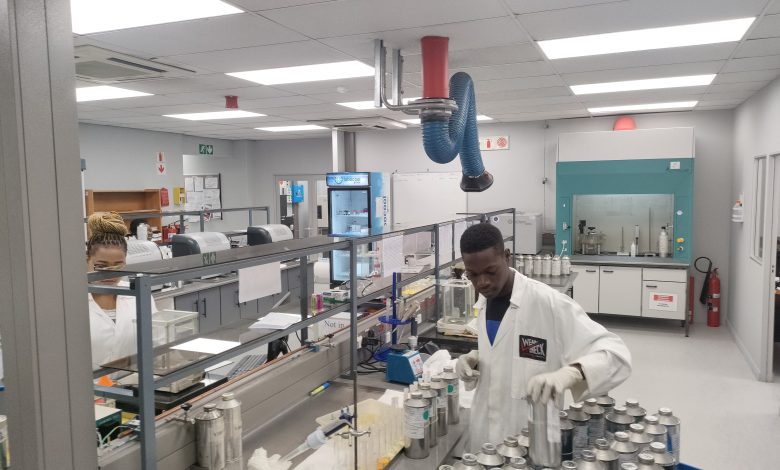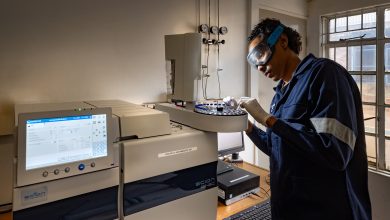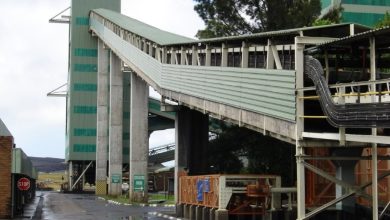
Oil-contaminated related transformer failure remains a challenge in mining operations with huge implications on production and safety. MINING BUSINESS AFRICA asks Pierre le Roux, WearCheck’s laboratories manager: transformer oil and fuel testing, about fundamental practices in transformer condition monitoring as part of predictive maintenance.

MBA: From your engagements with the industry, what are the common fluid-related issues that accelerate transformer performance degradation?
At WearCheck, our transformer oil testing division has been operating for more than 20 years. Over this time, we have noticed that transformer performance degradation is often accelerated by insulating-fluid-related issues such as oxidation, contamination, and water infiltration. Oxidation occurs when transformer oil reacts with oxygen, forming acidic by-products and sludge that reduce its insulating and cooling properties.
Contamination from particles, such as dust or metal fragments, can degrade the oil further, leading to a decrease in dielectric insulating properties. Furthermore, water infiltration – be it from leaks, condensation or a b-yproduct of cellulose degradation – significantly lowers the dielectric strength of the oil, making it more prone to electrical breakdowns. These factors collectively compromise the oil’s ability to insulate and cool the transformer, ultimately reducing its efficiency and lifespan.
MBA: What key parameters should be considered in oil sampling (fluid analysis) as part of predictive transformer condition monitoring?
PlR To get the best results from a transformer oil condition monitoring programme, it is necessary to follow these guidelines:
- Samples should be taken only by well-trained, competent personnel,
- Samples must represent the bulk of the transformer’s oil content,
- Always use a clean process to sample the oil,
- Ideally, sample an area after the cooling system, where there is a constant flow of oil,
- Samples, once taken, should be sealed, so that the integrity of the oil is not lost, in other words, a gas-tight seal should be used.
We also recommend that samples should be transported as soon as possible to a laboratory to minimise degradation of the sample through exposure to environmental elements.
MBA: Are there any measures to ensure the accuracy of results? Are other tests recommended?
PlR: All the laboratory equipment in WearCheck’s transformer oil testing laboratories undergoes regular calibration assessment to ensure that the test results are in line with the recommended guidelines stipulated by the various international standards, such as the IEC (International Electrotechnical Commission), SANS (SysAdmin, Audit, Network, and Security), and ASTM. (ASTM testing refers to the evaluation of materials, products, systems, or services according to standards set by the American Society for Testing and Materials).
The transformer oil testing laboratories at WearCheck participate at regular intervals in round-robin testing, which is hosted by either international bodies such as SGS (Société Générale de Surveillance) and ASTM, or by local laboratories. The outcome of these tests is used as a tool to evaluate accuracy of test results.
WearCheck’s Johannesburg transformer oil testing laboratory has achieved ISO / IEC 17025 accreditation, which is the standard for which labs must hold accreditation in order to be deemed technically competent. In many cases, suppliers and regulatory authorities do not accept test or calibration results from a non-accredited lab. At WearCheck, we use the ISO/IEC 17025 standard to guide our quality system, to ensure that we produce accurate, valid results consistently.
In addition, all our transformer oil testing technicians have undergone the required training to perform the various tests. If any new testing techniques or instruments are incorporated into our transformer oil analysis regime, then all staff are trained accordingly.
In terms of recommending other tests, based on the outcome of the oil test results, further testing might be recommended to verify the initial diagnosis. For example, the degradation of cellulose can be visible through three different tests: dissolved water content, carbon monoxide / dioxide content, and furan content. Conducting all three tests on the sample is a sure way to verify the condition of the cellulose.
Normally, international standards are followed to select the testing needed for specific transformers and specific oils. In other words, certain transformers need particular tests, and certain oils need additional tests.
Apart from transformers, we also test the insulating oil in electrical switchgear. Electrical switchgear has different requirements to which the oil must comply, than transformer requirements.
The more tests that are conducted, the more holistic the view of the transformer’s health, which enables diagnosticians to pinpoint problems with greater accuracy.
MBA: What common indicators suggest there are anomalies with transformers?
PlR: Common indicators of anomalies in transformers include unusual temperature spikes, which may signal overheating or insulation failure, and abnormal noise levels, such as humming or buzzing, suggesting issues with the core or windings.
Changes in electrical parameters, like sudden variations in voltage or current, could point to internal faults. Deterioration in oil properties, revealed through fluid analysis, often hints at insulation or cooling problems. Additionally, signs of physical damage, oil leaks, or corrosion are clear warnings of potential malfunctions.
We recommend regular monitoring and early identification of these indicators – this is essential to prevent major failures and ensure transformer reliability. It is also useful in order to establish a trend in the transformer’s performance.
MBA: What critical assessments are conducted to inform decisions about interventions?
PlR: A transformer’s condition is assessed on a physical inspection – visual inspection can reveal signs of rust, oil leaks, excessive humming and other problems. Furthermore, the test results from the insulating oil sample are used to assess the electrical and thermal properties of the transformer and its oil.
In addition, an electrical assessment of the transformer should be conducted through various electrical tests. The majority of these tests are done when the transformer is in offline condition.
A further consideration is the comparison of the transformer’s behaviour with the behaviour of sister transformers, or those of the same family of transformers, and in similar designs.
MBA: What practical interventions can be incorporated to improve transformer condition?
PlR: In our experience, we find that improving transformer condition involves implementing practical interventions such as regular maintenance schedules, comprehensive fluid analysis, and enhanced cooling systems.
Routine maintenance, including inspection of bushings, windings, and insulation, helps identify early signs of premature failure of the transformer or its components. Fluid analysis detects contaminants, water (dissolved and free water), and dissolved gases, allowing timely action to rectify possible faults. Only after repairs have been conducted, should oil treatment or replacement be done to maintain optimal insulation and cooling properties.
Additionally, employing cutting-edge monitoring technologies like thermal imaging and online condition monitoring systems ensures real-time detection of anomalies, enabling prompt corrective action to enhance reliability and performance.
MBA: In brief, what is your advice to industries on best practices for maintaining optimal transformer condition?
PlR: WearCheck’s transformer maintenance programme is aimed at maintaining optimal transformer condition, and includes several points of action. We advise our transformer clients to prioritise regular maintenance and monitoring. Key practices include scheduling routine inspections to detect early signs of wear, and performing fluid analysis to monitor water, dissolved gases, and contamination, as well as prevention of overheating.
Employing advanced diagnostic tools, such as thermal imaging and online monitoring systems, allows real-time tracking of performance and anomalies. Proactive interventions such as timely oil management, insulation checks, and maintaining cooling mechanisms can extend the lifespan of transformers, reduce downtime, and ensure reliable operations. A commitment to these best practices fosters efficiency and long-term cost savings.






